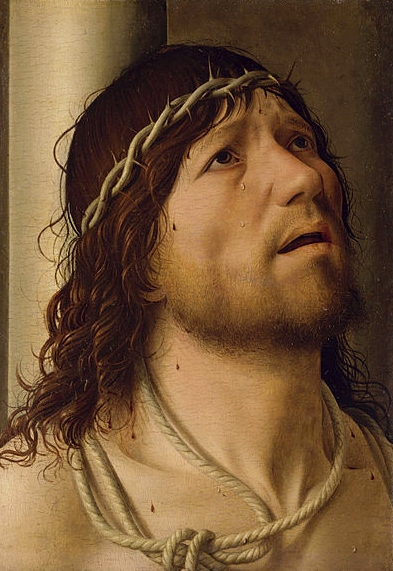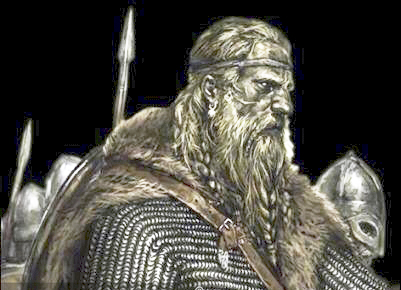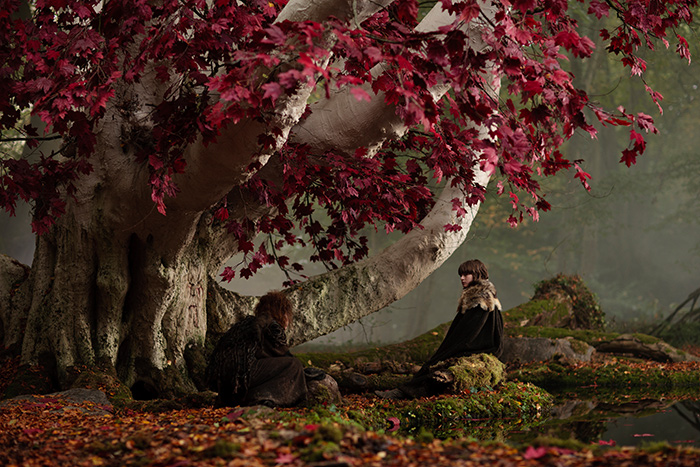
The role of the berserkers in the Germanic world
The Berserkers are associated with Germanity, that is, the set of Germanic tribes. These include Scandinavians, Anglo-Saxons, Dutch and Germans. Those were times when the pre-Christian Vikings terrified a Europe castrated by Christianity, and in which the Roman Empire had disappeared. Generally, the Viking despised the Christian and the Christians feared the Viking. On one occasion the Vikings kidnapped a bishop. When they did not get a ransom for him, they killed him by hitting him with animal skulls. They were souls still wild and uncontaminated, possessed by that brutal and forceful mentality so typical of Nature.
Among all these barbarians, the most faithful guardians of the sacred fury were the berserkers. This word survived in the vocabulary of the nations that knew these men: in England, the word still designates a person of wild or untamed character, or a state of irrational anger. Berserk can be translated as ‘bear shirt’ or ‘shirtless’. It comes from the fact that the berserkers fought dressed in bearskins, and sometimes half-naked or naked.
Among the ancients, every man was a warrior. He was not warring during all his life, but was called to it on turbulent occasions, while in peace he dedicated himself to his field work or domain. So it was throughout the ancient world—except Egypt, Sparta, Rome, the Byzantine Empire and some other exceptions, which had ‘professional’ armies. In Germanity, however, there existed a curious caste, the artists of war, considered touched by the Divine.
Selected warriors lived in small communities, isolated from population centres and led by a priest of the cult of Odin / Woden / Wotan according to the region, a skald (bard), a gothi (druid), a vikti (master of the runes) or another type of shaman, wizard or tribal magician. They formed authentic sects in the Germanic world, part of the tradition of the männerbunden: the unions of men, alliances of warriors, military brotherhoods or, as the Romanian Mircea Eliade called them, ‘secret societies of men’.
In the families of the Germanic aristocracy, there was a tradition similar to that of the oracles in Greece: at the birth of the child, a priest performed a ritual through which one could glimpse his fate. We can assume that some of the most promising babies were offered by their parents to be raised in a ‘military’ community of this type. This would not take place right away, but at a slightly later age. At that age, the corresponding shaman would appear to take the child to his new life in the woods, where he would learn to acquire the instincts of the predator.
From childhood, berserkers were fitted in the neck an iron ring that is related to the Celtic torques and that would not be removed until killing their first victim. The type of instruction given to them is not completely known, but basically it would be a kind of military and ascetic camp in the Spartan style, in which they were taught how to handle themselves with weapons, in close combat and in life in Nature, in addition to acquiring hardness and resistance against all kinds of deprivation, within the framework of a hunter-gatherer life.
They also learned tribal techniques and dances designed to generate large amounts of adrenaline. Over the years, they were building the body of the warrior, accustomed to fatigue, deprivation and suffering. All this conjugated with some unknown form of yoga. One of the skills they achieved through their mysterious asceticism was sitting on the snow during a snowstorm or blizzard, melting with their own inner heat the snow that fell on them.
This advanced test takes place, even today, among some Tibetan lamas (the respiratory exercise they use to generate heat is called tumo or ‘fire in the belly’). And in the Celtic legends, one of the qualities that was attributed to the great heroes was to melt snow a hundred feet away (30 m) with their own body heat. An interesting case, dating from Ireland in 700 BCE, is that of folk hero Cú Chulainn. Legend has it that, after a battle, Cú Chulainn returned to his village still in a frenzy of combat.
His compatriots, fearing that he would kill the whole town, threw themselves on him and put him in a barrel of cold water. By the ardour of the hero, the water broke the wooden plates and the metal straps, and exploded the barrel into a thousand pieces, ‘like a nut breaks’. In the second barrel of cold water, Cú Chulainn produced large bubbles like fists. And in the third, he produced a boiling phenomenon where some men could bear to dip their hands but others not. This inevitably reminds us of the Greek Heracles, who had to rush to the waters of Thermopylae to quench an attack of internal fire, turning the waters of the place into thermal springs.
Very young berserkers received initiation in a cult that could be called the mysteries of Odin, the patron of these warriors. Berserkers were often called ‘men of Odin’ or ‘wolves of Odin’ for their predominant cult of this deity, called ‘father of all’ or ‘the strong one of above’. The berserkers could therefore be described as sects of elite warriors, severely trained from childhood in the arts of struggle and inner alchemy, and initiated into a cult of Odin by some kind of extremely violent ritual.
Mircea Eliade specified that one did not get to be ‘berserk’ only by bravery, physical strength or hardness but also after a magic-religious experience that radically modified the young warrior’s way of being. He had to transmute his humanity through an access of aggressive and terrifying fury, which he assimilated from the enraged butchers. ‘He warmed up’, continues Eliade, to an extreme degree, transported by a mysterious, inhuman and irresistible force: his combative impulse thus emerged from the depths of his being.
In combat, berserkers presented a terrifying aspect to their enemies. Dressed in bear or wolf skins (in which case they were called ulfhednar or ulfsark, ‘wolfskin’), naked or painted black, they threw themselves into the battle always in groups of twelve (*), shouting as if possessed, throwing foam by the mouth and being immune to the most terrible wounds. In the sixth chapter of the Ynglinga Saga people talk about them:
His [Odin’s] men rushed forwards without armour, were as mad as dogs or wolves, bit their shields, and were strong as bears or wild bulls, and killed people at a blow, but neither fire nor iron told upon themselves. These were called Berserker.
In the Hrafnsmál, the skaldic Torbjørn Hornklove describes them in combat:
There the berserkers shouted—the battle was unleashed—, wolf skins howled wildly, spears whistled… wolf skins, they were called. You see them act, the shields bloodied. The swords roared when they reached combat. The wise king in combat is protected by tough heroes who raise their shields.
Left, a Viking helmet with chainmail mask to protect the face. The fantasy of horned helmets comes from a European black legend.
It was the Celts (and many medieval knights) who wore helmets with horns, and often more as ceremonial ornaments than as combat helmets.
__________
[*] The group of twelve men (plus the leader or protégé, the thirteenth) is a constant not only in various Indo-European mythologies but in the daily life of the Germans, and represents the select circle. Twelve were the men who were normally required to carry out a sacred mission. Twelve were the representatives of the Council among the Nordic peoples. Twelve were the sworn witnesses who appeared in certain cases of justice. Twelve were the representatives of a large group that were invited to a party. Twelve were the select gentlemen of the Arthurian round table, as well as twelve are the rays that depart from the central point in the archetypal symbol of the black sun.
And, as we all know, twelve were the apostles of the Jewish plagiarism in the gospel story.





